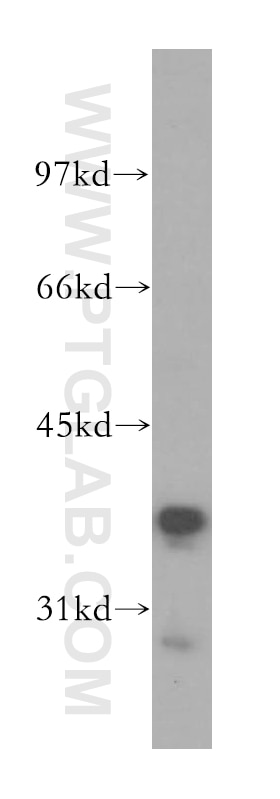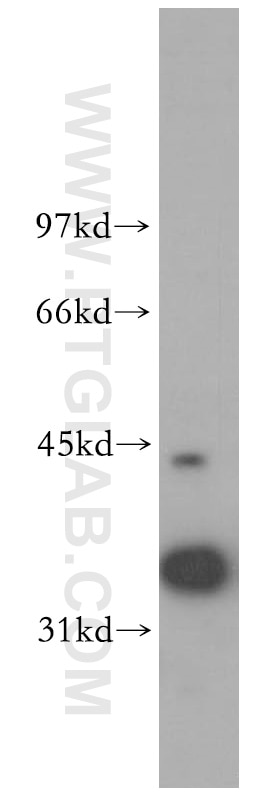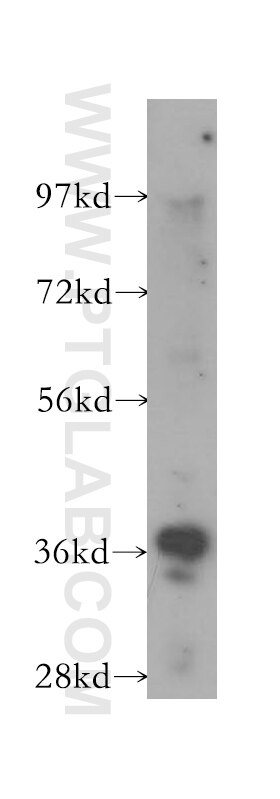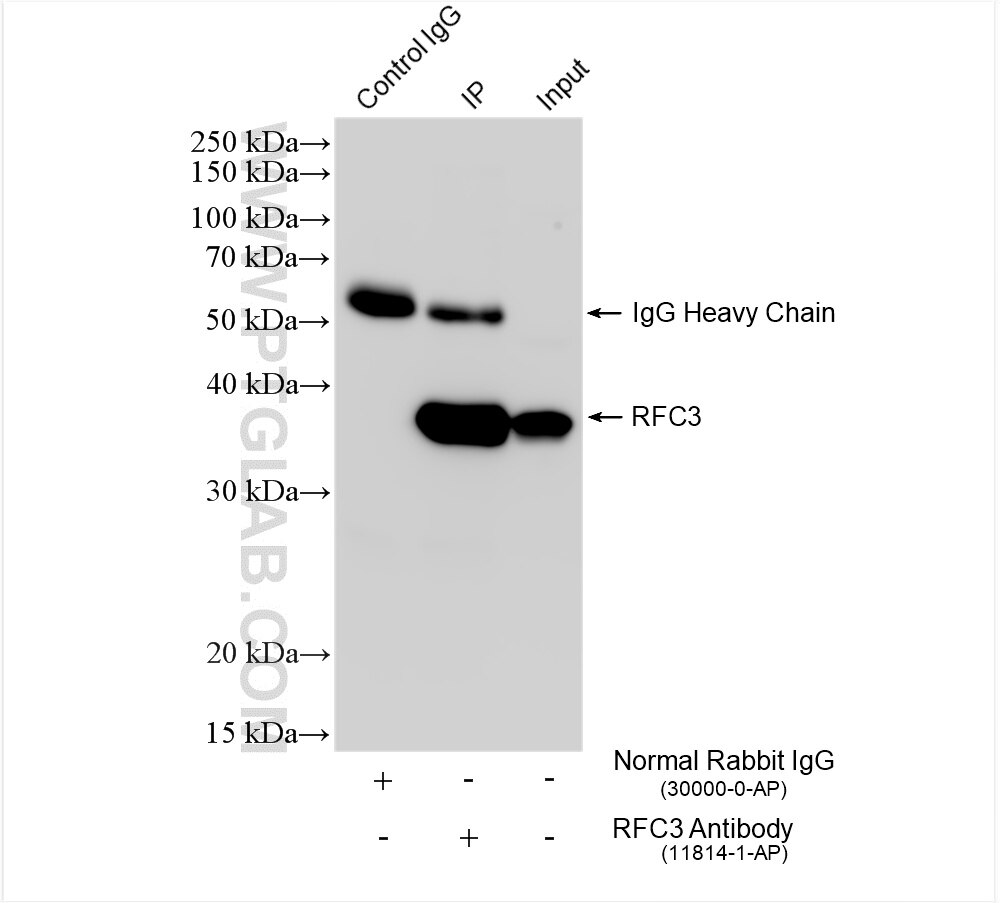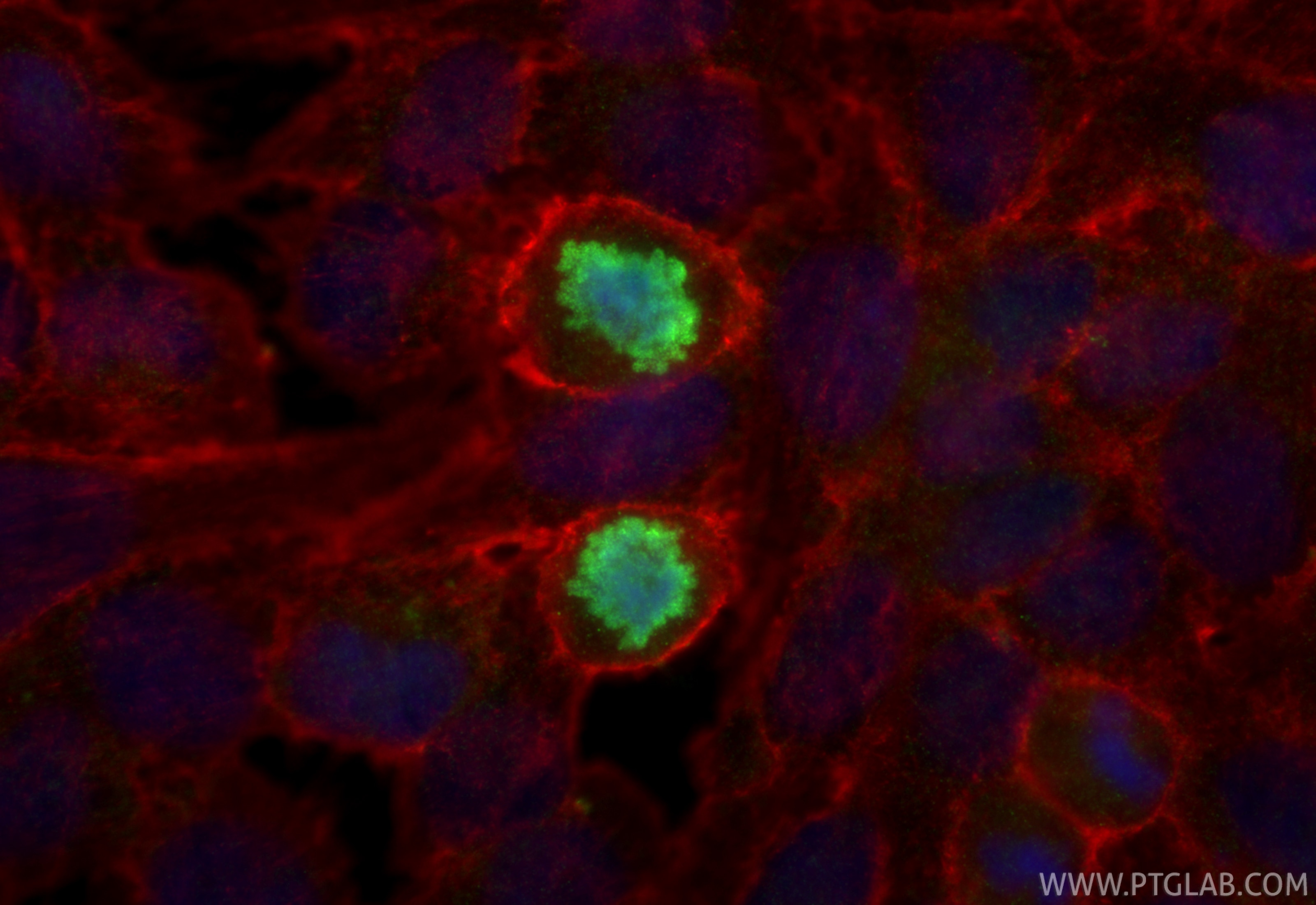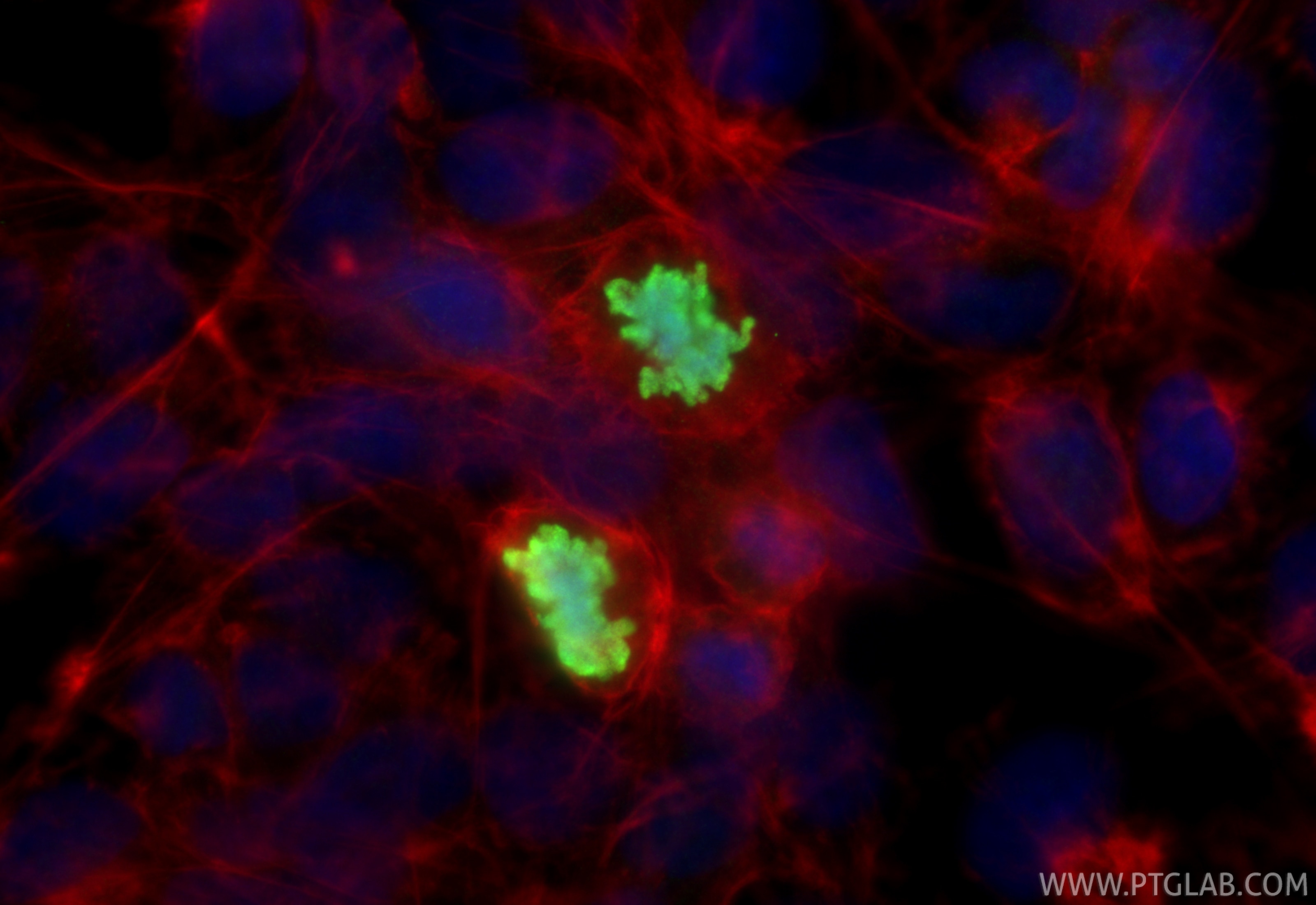Tested Applications
| Positive WB detected in | human liver tissue, HeLa cells, human heart tissue |
| Positive IP detected in | HeLa cells |
| Positive IF/ICC detected in | U2OS cells |
Recommended dilution
| Application | Dilution |
|---|---|
| Western Blot (WB) | WB : 1:500-1:3000 |
| Immunoprecipitation (IP) | IP : 0.5-4.0 ug for 1.0-3.0 mg of total protein lysate |
| Immunofluorescence (IF)/ICC | IF/ICC : 1:200-1:800 |
| It is recommended that this reagent should be titrated in each testing system to obtain optimal results. | |
| Sample-dependent, Check data in validation data gallery. | |
Published Applications
| KD/KO | See 1 publications below |
| WB | See 4 publications below |
| CoIP | See 1 publications below |
Product Information
11814-1-AP targets RFC3 in WB, IF/ICC, IP, CoIP, ELISA applications and shows reactivity with human, mouse, rat samples.
| Tested Reactivity | human, mouse, rat |
| Cited Reactivity | human, mouse |
| Host / Isotype | Rabbit / IgG |
| Class | Polyclonal |
| Type | Antibody |
| Immunogen |
CatNo: Ag2269 Product name: Recombinant human RFC3 protein Source: e coli.-derived, PGEX-4T Tag: GST Domain: 1-356 aa of BC000149 Sequence: MSLWVDKYRPCSLGRLDYHKEQAAQLRNLVQCGDFPHLLVYGPSGAGKKTRIMCILRELYGVGVEKLRIEHQTITTPSKKKIEISTIASNYHLEVNPSDAGNSDRVVIQEMLKTVAQSQQLETNSQRDFKVVLLTEVDKLTKDAQHALRRTMEKYMSTCRLILCCNSTSKVIPPIRSRCLAVRVPAPSIEDICHVLSTVCKKEGLNLPSQLAHRLAEKSCRNLRKALLMCEACRVQQYPFTADQEIPETDWEVYLRETANAIVSQQTPQRLLEVRGRLYELLTHCIPPEIIMKGLLSELLHNCDGQLKGEVAQMAAYYEHRLQLGSKAIYHLEAFVAKFMALYKKFMEDGLEGMMF Predict reactive species |
| Full Name | replication factor C (activator 1) 3, 38kDa |
| Calculated Molecular Weight | 40 aa, 6 kDa |
| Observed Molecular Weight | 38 kDa |
| GenBank Accession Number | BC000149 |
| Gene Symbol | RFC3 |
| Gene ID (NCBI) | 5983 |
| RRID | AB_2178470 |
| Conjugate | Unconjugated |
| Form | Liquid |
| Purification Method | Antigen affinity purification |
| UNIPROT ID | P40938 |
| Storage Buffer | PBS with 0.02% sodium azide and 50% glycerol, pH 7.3. |
| Storage Conditions | Store at -20°C. Stable for one year after shipment. Aliquoting is unnecessary for -20oC storage. 20ul sizes contain 0.1% BSA. |
Background Information
RFC3, also known as RFC38, is a 356 amino acid protein, which localizes in nucleus. Replication factor C (RFC) is a component of the eukaryotic DNA polymerase . In all eukaryotic cell cycles, it is essential for DNA duplication, DNA injury repair and checkpoint control. RFC consists of five subunits (RFC1-5). The interrelationships between RFC2, RFC3 and the c-MYC oncogene (transcription factor) can induce cell division and proliferation. RFC3 is associated with liver, breast, esophageal and ovarian cancer, and serves a critical role in cellular proliferation, invasion and metastasis. RFC3 exists two isoforms with molecular weight of 34 kDa and 38-40 kDa.
Protocols
| Product Specific Protocols | |
|---|---|
| IF protocol for RFC3 antibody 11814-1-AP | Download protocol |
| IP protocol for RFC3 antibody 11814-1-AP | Download protocol |
| WB protocol for RFC3 antibody 11814-1-AP | Download protocol |
| Standard Protocols | |
|---|---|
| Click here to view our Standard Protocols |
Publications
| Species | Application | Title |
|---|---|---|
Acta Biochim Biophys Sin (Shanghai) FANCA facilitates G1/S cell cycle advancement, proliferation, migration and invasion in gastric cancer | ||
Virol J IRF2 inhibits ZIKV replication by promoting FAM111A expression to enhance the host restriction effect of RFC3.
| ||
Cell Rep Cyclin N-Terminal Domain-Containing-1 Coordinates Meiotic Crossover Formation with Cell-Cycle Progression in a Cyclin-Independent Manner. | ||
Exp Ther Med RFC3 drives the proliferation, migration, invasion and angiogenesis of colorectal cancer cells by binding KIF14 |

